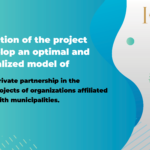Setting up a public-private partnership (PPP) contract
Public-private partnership
Public-Private Partnership (PPP) is a mechanism by which governments, in cooperation with private sector companies, expand the infrastructure needed to provide services to the public. The important advantage of this method is to preserve the interests of both sides of the cooperation, that is, the public sector and the private sector.
For example, while governments are facing the problem of limited revenue sources in order to be able to develop infrastructures in line with population growth, by using this method, by handing over the construction and operation of infrastructures to the private sector, this sector can benefit from appropriate profits and at the same time It also provided infrastructure services needed by the government. Also, in this method, due to the existence of a suitable mechanism for the cooperation of the government and the private sector and the absence of the structure of the employer and the contractor, the party that can manage the risk well accepts the risk of the project, and in this way, with the increase in efficiency, the costs are reduced.
There is no consensus on how to define a public-private partnership (PPP). This sector can cover hundreds of different types of long-term contracts with a wide range of risk allocations, funding arrangements and transparency requirements. The development of PPPs, as a concept and a practice, is a product of the new public management of the late 20th century and the pressures of globalization. For example, the OECD formally defines public-private partnerships as “long-term contractual arrangements between the government and a private partner whereby the government provides public services using a capital asset and shares its financial resources”.
Historical roots of public-private partnership (PPP)
Governments have historically used such a combination of public and private efforts. For example, much of the basic infrastructure of the United States was built by what could be considered public-private partnerships. These infrastructures include the Philadelphia Road in Pennsylvania in 1792, the fleeting steamboat line between New York and New Jersey in 1808, and many of the railroads of the American state of New Jersey in 1815. In the early 21st century, the use of different types of PPP by governments around the world was on the rise, but this trend seems to have reversed after the 2008 global financial crisis.
Delivery models
There are different types and different delivery models of PPPs, some of which are:
- operation-maintenance contract (OM)
- Build-Finance (BF)
- Build-Operate-Transfer (BOT)
- Build-Own-Operate-Transfer (BOOT)
- Build-Lease-Transfer (BLT)
- Design-build-finance-maintenance (DBFM)
- Design-Construction-Management-Financing (DCMF)












